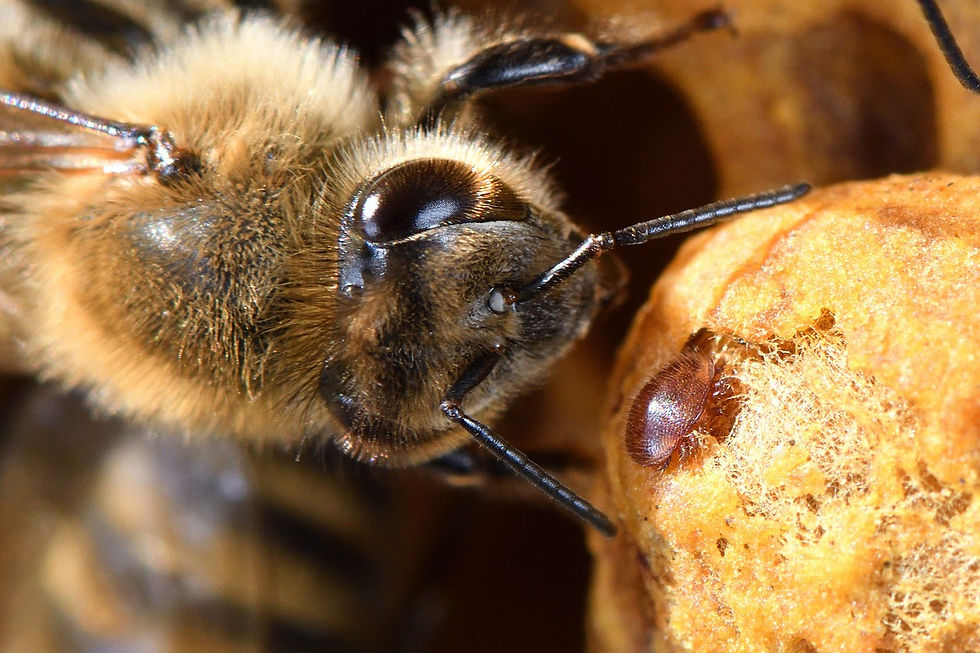Pilbara: Red Dwarf Honey Bee Incursion update
- bicwaorg
- Mar 19, 2024
- 2 min read
DPIRD, 19 MARCH 2024
As of early March 2024, 26 Red dwarf honey bee (RDHB) active colonies have been found and destroyed, including one swarm. 12 abandoned hives have also been found.
Detections remain confined to a small section of the Burrup Peninsula, within the Quarantine Area and all colonies and abandoned hives have been found within a 2 km radius of each other.
Due to the ongoing detection of RDHB, the current Quarantine Area Notice (QAN), formally gazetted on 1 September 2023, has been now extended to 30 June 2025.
The Quarantine Area remains unchanged and covers the Burrup Peninsula in the Pilbara (see map) to support the ongoing biosecurity response to eradicate RDHB.
Beekeepers with hives, equipment or those who have collected swarms on the peninsula are not permitted to move them outside the Quarantine Area to prevent the pest from spreading.
The QAN and all updated maps and notices can be found on the RDHB webpage: agric.wa.gov.au/red-dwarf-honey-bee.
RDHB response plan
The DPIRD incident response team has submitted a response plan to the Consultative Committee for Exotic Plant Pests (CCEPP) on the 27 February 2024 for endorsement.
It is anticipated that it will be reviewed by the CCEPP in March.
Next steps – Drones and lure trials
DPIRD will begin drone trials this month.
If successful, this new technology will support and enhance on-ground surveillance activities by field staff in the rugged terrain of the Burrup Peninsula.
The DPIRD drone trials will:
o Test two different types of drones to identify water sources and search in
hard to access areas.
o Test thermal imaging to find colonies.o Use photogrammetry to map out the area in support of vegetation mapping.
o Additionally, BeeDar technology is expected to be trialled in April 2024.
Also, from March 2024, a field team will be dedicated to trialling a range of new lures.
The lure trials will include egg yolk and sucrose syrup, a water array, vane traps, bait stations and bee lining.
These lures aim to attract foraging RDHB to assist field teams to locate colonies.

Reporting
Members of the public and workers in the area are encouraged to report sightings of any exotic bees in the area to assist in surveillance for red dwarf honey bees.
If you work at a port or transport imported goods and shipping containers, you must report any sighting of bees associated with these goods.
All beekeepers with hives in the Karratha area can report the location of their hive by filling in the online form (https://www.agric.wa.gov.au/form/managed-european-honey-bee-hives-karratha-region)
Report all sightings to the department’s Pest and Disease Information Service on
(08) 9368 3080 or email padis@dpird.wa.gov.au.
Alternatively, they can send photos via the department’s MyPestGuide® Reporter app (Google Play Store and Apple iTunes Store).
More information
For more information, please visit: agric.wa.gov.au/red-dwarf-honey-bee.
Important Disclaimer
The Chief Executive Officer of the Department of Primary Industries and Regional Development and the State of Western Australia accept no liability whatsoever by reason of negligence or otherwise arising from the use or release of this information or any part of it.
Copyright © State of Western Australia (Department of Primary Industries and Regional Development), 2024.
For beekeeper enquiries, please contact James Sheehan on 0427 449 103 or james.sheehan@dpird.wa.gov.au




Comments